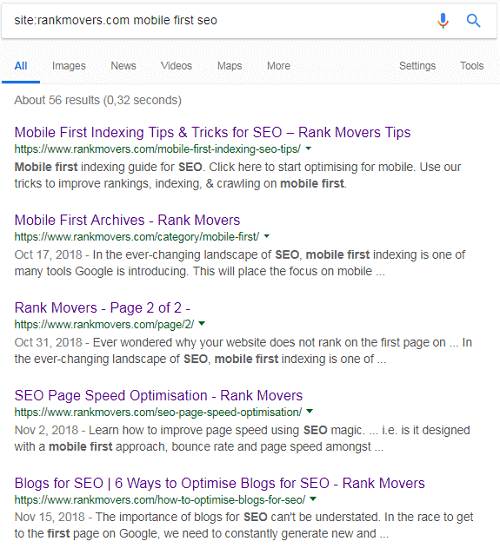How to Identify & Fix Keyword Cannibalization
Keyword cannibalization is a common term amongst webmasters and SEO specialists. So what is keyword cannibalization? Well, keyword cannibalism is commonly defined as: “When a website’s information architecture relies on a single keyword or phrase on multiple pages of the website.” Many SEO specialists believe that this ‘confuses’ Google.
However, according to Patrick Stox from Search Engine Land, that’s just plain wrong. Using the same keyword across multiple pages actually confuses the user, not the search engine. Again, this is based on search/user intent, and how well the user is catered for. Also, Google is a lot smarter than it used to be, so content relevance is key.

Why is keyword cannibalization bad for SEO?
According to Stox, what actually happens when a secondary page ranks higher than the intended page, is that the secondary page is considered more relevant. What’s more, SEO original content will be valued higher by search engines.
What is duplicate content?
According to Google’s page on the topic, the definition of duplicate copy is sections of content that match completely or similarly with other pages. This is also accepted by Google as generally ‘not deceptive in origin’.
In other words, when a focus keyword for one page is used liberally on two or pages, the search engine won’t be able to rank one higher than the other. For example, using your main page focus keyword repeatedly on inner pages could lower page authority and the relevance of your content.
Do you have examples of duplicate content?
There are two types of duplicate page content, malicious and non-malicious. For our purposes, we’ll focus on the second type’s examples from Google:
- Forums that can generate both regular and accelerated mobile pages – e.g. Reddit
- Online shopping items linked through multiple distinct URLs – e.g. Amazon where different sub-stores sell the same product
- Print-only versions of web pages – e.g. old Wikipedia

Does user intent affect rankings for keywords & cannibalization?
Every page you write will rank for certain keywords; this is a fact of SEO. So what happens when more than one page ranks for overlapping keywords? Well, to quote Search Engine Land again, the most relevant page will rank higher. However, both pages may show up on Google, with the more relevant one higher up. Still, if you have too many overlapping keywords and similar sections, the pages could be considered duplicates.
4 Types of SEO Keyword Cannibalization
According to Digital Marketing Magazine, there are four types of keyword cannibalization linked to duplicate content:
1. Internal Keyword Cannibalization
This is when two pages on your site compete for the same search term. The most common occurrence of this is when two pages are identical in layout and theming. So, Google can’t distinguish between the pages and which one should appear. A good example would be two pages about the same product or topic.
2. Subdomain Cannibalization
In this case, similarly named subdomains will be considered cannibalized and too similar to rank. Example: blog.rankmovers.com or news.rankmovers.com. This could also apply to sub-pages and categories.
3. International Keyword Cannibalization
Lack of foresight when targeting local searches can lead to international cannibalism. For example, offering dollar prices on a UK-based website. Regional content must be made clear through language tags.
4. Semantic Flux Cannibalism
When your family network of sites all use the same content strategies and keywords, your site will be affected. That’s why we don’t link our individual sites to one another. To fix this issue, experts recommend using ‘clearly defined, unique content’. Then, you’ll need to ensure that servers, hosts and CMSes are separate.
E.g. Two different social media sites with the same products/services/content – Facebook owns Instagram. What if they were the same thing with the same content but in different formats? How would you differentiate? That’s why each app has it’s a unique purpose/intent, even though you can share between Facebook and Instagram from IG, but not FB.
How to Find Duplicate Content on Your Site
Checking for keyword cannibalization is fairly easy through a Google duplicate content checker. All you need is to type in site:domain.com ‘keyword’ (e.g. site:rankmovers.com mobile first). In this example, I searched for the main keyword of my previous blog, and it was first. Generally, a shorter and/or broader focus keyword will overlap with other pages. The key is to have your intended page appear first for the focus keyword.

There are also commercial duplicate content tools like Copyscape and Ahrefs, though these are paid services. On Copyscape, similar content on other domains or websites will be highlighted for ease of use. This is useful for visually similar content and formats. So, your duplicate content issues can be fixed across the board.
How to Avoid Cannibalization in 10 Steps
- Check for duplicate content on search engines and tools
- Set your preferred domain on Search Console, this will tell Google which domain to look for on links.
- Use 301s to redirect users, spiders and Google bots in the .htaccess file if your site has been restructured.
- Use high-level domains for location specific content, e.g. .co.nz, .com.au, .ca, etc.
- Improve consistency when linking internally to avoid confusion. I.e. https://www.site.com/page instead of all variations of the same URL.
- Improve boilerplate content across your site, i.e. global navs, space areas, mark-ups, etc. by ensuring the links are sitewide.
- Avoid blank pages, or publishing stubs, because users will immediately bounce. If you need these pages, add a ‘noindex’ tag.
- Learn & understand your content management system, including the styling of blogs and pages. This is because they could be formatted differently in an archive, as a snippet on the homepage and as an entry on other pages with the same category.
- Minimize similar/duplicate content by combining similar pages or expanding one page. Or by optimizing your intended page.
- Use canonicals to direct bots effectively through the site, and to place the appropriate page as the main result for Google.

What is Cannibalization in SEO?
In short, the best way to improve content and avoid keyword cannibalization is to minimize duplicate copy. I’d also recommend revising pages and site structure regularly. Consistency relies on constant improvement. TL: DR:
- Search engines know which page is relevant.
- Keyword cannibalism is not the end of the world.
- Consistently improving content will avoid duplicates.
- Combining similar pages will help your site, just use the one that ranks better.
- More than one ranking page is okay; you just need to improve the more relevant page.
- Randomly check for duplicate content, cannibalised keywords and relevance.
- No matter how great the page is when first published, it will lose relevance over time.
If you’ve found any helpful tips or improvements, let us know below! For a little more information, download our breakdown on Keyword Cannibalisation.


